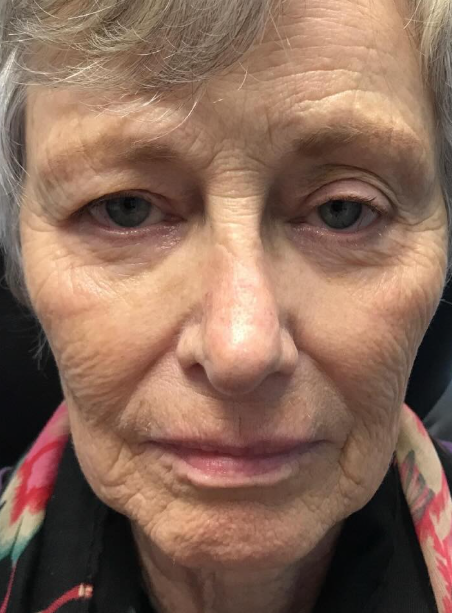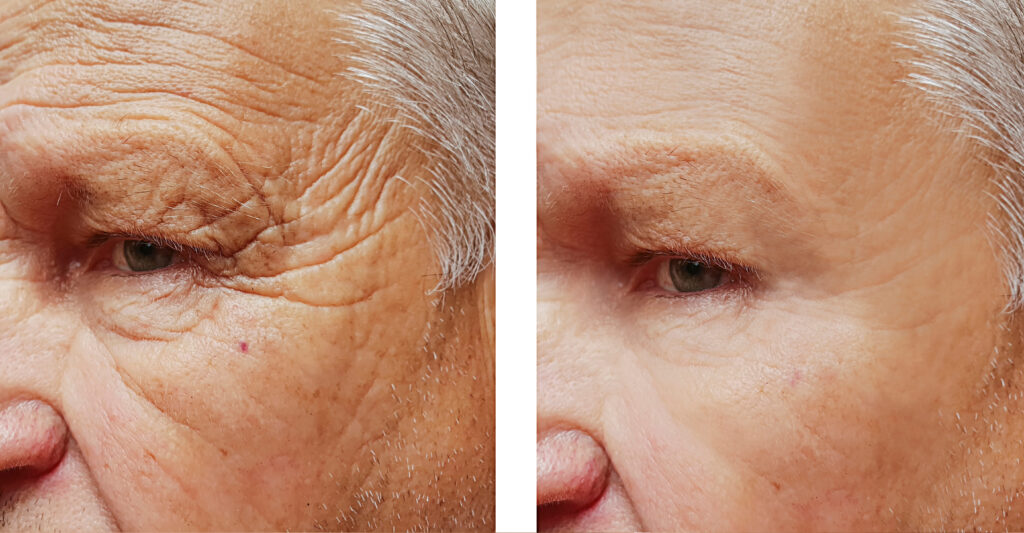Carbon Dioxide lasers are used to remove thin layers of skin and treat a wide range of skincare concerns.

The carbon dioxide (CO2) laser uses focused light to resurface the skin. It has been popular since the 1980s, especially for treating signs of aging and skin damage.
The laser works by sending electricity through a tube filled with gas. This creates a light beam with a set wavelength.
Next, the light is broken into short beams that target water in the skin, causing the top layer of skin cells to vaporize. As a result, the old skin is removed, making room for fresh, new skin to grow.
At the same time, the laser goes deeper into the skin to boost collagen production. This helps the skin become firmer and smoother over time.
Overall, CO2 laser resurfacing is a strong option for facial treatments. It works well for many skin concerns, including wrinkles and scars.
CO2 laser resurfacing usually takes place in an outpatient setting and lasts between 30 minutes to two hours, depending on the size of the area and the intensity of the treatment.
Before the procedure, your provider numbs the area with local anesthesia and may give you an oral sedative to help you relax. For deeper treatments, they may use general anesthesia, so you’ll need someone to drive you home.
During the treatment, the provider moves a handheld laser device over your skin, sending light in a grid-like pattern. If you’re under general anesthesia, you won’t feel anything.
If you’re awake, you may feel a snapping or tingling sensation.
After the procedure, the provider applies ointment and covers the area with dressings to protect your skin and support healing.
Downtime varies from several days for fractional treatments to over two weeks for fully ablative ones. During this period, expect swelling, scabbing, and discomfort. You can manage pain with over-the-counter or prescribed medication.
To reduce swelling, use a combination of prescription steroids and ice packs, and elevate your head while sleeping. Follow your doctor’s cleansing and moisturizing instructions, possibly using medical-grade products they recommend.
Moisturize regularly to promote healthy skin turnover and prevent scabbing. After initial healing, expect pink skin for weeks. You can resume using makeup once the area fully heals.
When outdoors, protect your skin from the sun with SPF 30+ sunscreen to prevent damage to the delicate regenerated skin.
Visible outcomes depend on treatment intensity and healing duration. Noticeable results typically appear after skin restoration and redness resolution, taking weeks for fractional treatments and months for fully ablative ones.
Clients see immediate improvements post-healing, but collagen-enhancing effects take a few months to develop as new cells and proteins form fully.
With proper skin care and sun protection, results can last several years. Regular hydration and antioxidant-rich products, along with high-SPF sunscreen, are recommended to prevent recurring damage.
However, skin aging is inevitable, necessitating ongoing maintenance. Continuous laser treatments or other rejuvenation therapies can help sustain results over time.
Fully ablative CO2 treatments pose significant risks, including burning and scarring due to the complete removal of surface skin layers. Healing can be intense, with weeks of swelling, scabbing, and redness. Adhering strictly to post-treatment instructions, including cleansing and moisturizing, is crucial to minimize infection risk. Your provider may prescribe antibiotics post-treatment.
Fractional CO2 treatments carry lesser risks but can still cause burning and scarring, particularly for those with medium to deep skin tones. Following a doctor’s guidance is essential for healthy healing and infection prevention.
Avoid CO2 lasers for active acne as they can exacerbate inflammation and bacterial spread. Those who have been on certain acne treatment medications within the previous six to 12 months should also refrain from CO2 treatment due to impaired healing capabilities.
Inform your doctor of any history of cold sores so that you can receive antiviral medication before treatment to prevent flare-ups.
The ideal candidate for fully ablative treatments is an individual with fair to light skin tone who exhibits signs of wrinkled, sun-damaged, or scarred skin. It is important to note that individuals with only fine lines or mild discoloration do not require the intense CO2 laser treatment.
For those with medium to deep skin tones (Fitzpatrick skin types IV-VI), fractional CO2 laser treatments present a viable option, as they remove only a fraction of the skin’s surface and pose minimal risk of pigmentation issues. Anyone with melanated skin should seek a provider with extensive experience treating melanated skin.
However, it is important to exercise caution with this laser technique, as it may not be suitable for individuals with skin types IV-VI, according to the Fitzpatrick scale, due to the heightened potential for hyperpigmentation. It’s important to note that individuals with only fine lines or mild discoloration do not require these intense treatments of fully ablative CO2.
There are two distinct variants of CO2 lasers: fully ablative and fractional. The primary differentiation lies in the extent of skin removal, or ablation achieved.
As the name suggests, fully ablative CO2 lasers entirely ablate the treated area. They eliminate all superficial skin impacted by the laser beam and elevate the temperature of the deeper dermal layer to initiate a regenerative healing response that produces new collagen and elastin.
These treatments are intense, typically necessitating general anesthesia, and require a minimum downtime of two weeks. Paradoxically, these lasers may cause more pigmentation complications and are only recommended for individuals with fair or light skin tones.
Medical professionals often advise prepping the skin with a prescription skin cream to mitigate potential risks. On a positive note, a single CO2 laser treatment is typically sufficient to achieve the desired outcome.
Fractional CO2 lasers emit a partial light beam that specifically targets only a fraction of the skin in pixelated patterns. Medical professionals can customize the extent and depth of treatment based on individual skin concerns. By selectively removing only a portion of the skin, fractional laser treatments are less aggressive than fully ablative laser procedures. While these treatments may induce deeper remodeling and regeneration, they are generally more effective for surface-level improvements.
The typical cost of ablative laser skin resurfacing ranges from $2,500 to $3,000, while non-ablative laser skin resurfacing typically costs between $1,000 and $1,500 per treatment. These prices are subject to significant variation based on various factors such as the geographical location of the provider, their qualifications, the level of intensity of the treatment, the size of the treatment area, and the number of sessions required.



